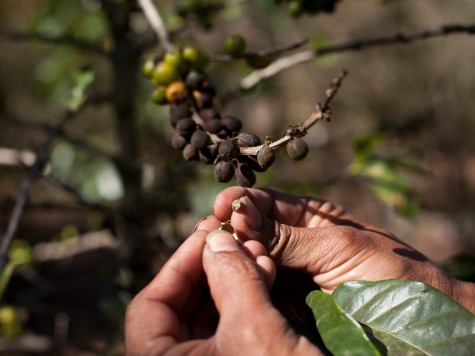
The United States has spent $14 million on combating a fungus known as “coffee rust” that threatens to severely diminish coffee harvests in Latin America this year. The United States Agency for International Development announced a new joint plan with Texas A&M University to stop the fungus from continuing to raise coffee prices.
The new $5 million plan will involve both research into how to fight coffee rust and efforts to reverse the effects of the fungus that have already hurt Latin American crops. Among those crops affected the most are Arabica blend coffee beans, which are used in some of the most expensive coffees distributed throughout American companies. While smaller coffee shops have been forced to raise prices thanks to the decreased availability of the bean, larger companies like Starbucks have said that they have so far been able to avoid a sharp spike in prices, but do not know how long.
Last March, Starbucks bought its first coffee farm in Costa Rica, intending to turn it into a research facility in which to find solutions to ending the coffee rust epidemic. The decision followed an official declaration of emergency from the government of Guatemala as coffee crops succumbed to the disease. “Supporting the farmer’s ability to access information, technology and resources allows them to adapt to these uncertainties and ensures the longevity of our industry’s supply chain,” Craig Russell, Starbucks Global Coffee executive vice president, remarked of projects to combat coffee rust.
Other coffee corporations, like Keurig Green Mountain, are concerned about the long-term price and quality effects of coffee rust but have yet to conclude in the short term what sort of damage could arise. The worst case scenario could be extinction of some types of coffee. According to Ric Rhinehart of the Specialty Coffee Association of America, a significant outbreak of coffee rust could result in “extraordinarily high prices for those coffees, if you can find them at all.”
According to USAID, coffee rust has already caused more than $1 billion in damages. Not only do those damages affect prices for American coffee, they may destabilize multiple economies in Central America. The coffee rust epidemic is considered by USAID the worst of its kind in history, and USAID head Raj Shah noted that the operation is not just to protect American coffee intakes but to “empower entrepreneurs and create sustainable livelihoods for families.” USAID Associate Administrator Mark Feierstein added that saving coffee crops helps ensure “farmers and laborers have stable incomes, don’t start growing illicit crops, or [are] forced to migrate because they can no longer support their families.”

COMMENTS
Please let us know if you're having issues with commenting.